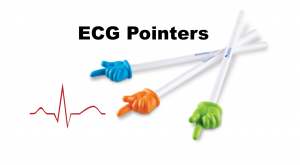Author: Jonathan Warren, MD (Clinical Ultrasound and EMS Fellow, Department of Emergency Medicine, Harbor-UCLA Medical Center) // Reviewed By: Steven Field, MD; Brit Long, MD (@long_brit)
Case:
A 56-year-old male with past medical history of CHF and ESRD presents to your hospital with respiratory distress in the setting of cough for the past four days. He has crackles on his lung exam and rhonchi present in the left lower lung base. His vital signs are notable for a fever to 101.2 degrees and hypotension of 80/50 with a lactate of 3.2. You suspect pneumonia with severe sepsis, but given his past medical history, have concerns for his fluid tolerance and give a small fluid bolus of 500cc Lactated Ringers. The patient remains hypotensive, and you wonder if the patient can tolerate additional fluid before needing to initiate vasopressors.
Introduction:
In critical patients, the evaluation of hemodynamic status and answering the question of a patient’s current volume status is crucial to expedite care. Frequently, point-of-care ultrasound (POCUS) is utilized to evaluate ejection fraction and for B-lines, but evaluating for these alone does not answer the full question.
Volume tolerance, is an assessment of the ability of a patient to tolerate additional fluid without developing worsening pulmonary edema or venous congestion and acute kidney injury. That is, it may provide a measure for when fluid resuscitation should be stopped and earlier pressors utilized. Frequently, the inferior vena cava (IVC) is utilized, but has been found to be inadequate to comment on volume tolerance due to complications with cylinder tangent effect, movement with respiration, and effect of respiration and cardiac function. This is where the Venous Excess Ultrasound Grading System (VExUS) was proposed to help answer the question of volume tolerance and assessing venous congestion.1
Even beyond the assessment of volume tolerance, there is suggestion that the VEXUS scan can be used to guide decongestion from heart failure,2 guide the decision for dialysis3, and identify different venous congestion as it mimics different pathologic states such as cardiogenic shock or cholecystitis.4 Beyond this, recent studies have demonstrated that the exam can be reliably performed by residents and does not require ultrasound trained faculty to perform.5
Finally, it should be noted, as we will review later, the VExUS exam comprises four different views. Some recent literature has sought to identify if one view is more predictive of others. Some studies favor the portal vein pulsatility, but the data for this is not consistent across studies.6,7
Performing the VExUS Scan:
The VExUS exam comprises four separate views evaluating the venous system for signs of congestion. The four main views consist of the IVC, hepatic veins, portal vein, and renal veins. To perform the exam, you will need to utilize the curvilinear probe on the abdominal preset (though some machines are releasing a VExUS specific imaging modality). You should also have an understanding of pulse wave doppler as the VExUS scan is essentially an evaluation of venous waveforms. This exam can be performed without EKG leads, but is significantly easier to interpret when they are connected to the ultrasound.

IVC
To obtain appropriate views of the IVC, have the patient lay in a supine position and place the probe into the subxiphoid with the probe marker pointed towards the patient’s head. Fanning to the right will allow you to bring out a view of the IVC as it passes through the liver. You can confirm the structure by observing the hepatic veins draining into the IVC. Once you have an image of the IVC, you want to measure the maximum IVC diameter. A measurement less than 2 cm stops the exam and correlates to a VExUS of 0. If greater than 2 cm, then you can proceed to the rest of the exam, acquiring all three additional views.
Hepatic Veins
You may image any of the three hepatic veins to obtain the proper waveforms, however it is important to note that you should obtain these views from an angle that is in parallel with the vessel (that is, the angle of insonation to the hepatic vein itself should be less than 60 degree to acquire appropriate waveforms). Once you’ve achieved the view, you can use color doppler to visualize the hepatic veins. This should be blue as venous flow is moving away from the probe. Applying the pulse wave doppler within the vessel will allow you to obtain hepatic venous waveforms.

Typically hepatic waveforms should have a systolic and diastolic phase with the systolic being greater than that of the diastolic. As venous congestion increases, the diastolic filling becomes more prominent and greater than that of the systolic phase. Finally, in severe venous congestion, there is S wave reversal.

Portal Vein
With your curvilinear probe within the midaxillary line on the right side, you can obtain a view of the portal vein in the longitudinal axis. Putting color doppler onto this will demonstrate red color (as the flow is now coming toward the probe). Placing the gate onto this vessel should result in a venous waveform with primarily monophasic flow in the non-congested patient.

Respiratory variation may occur naturally, but normal pulsatility should be <30%. As venous congestion increases, so does the pulsatility of the portal vein doppler with >50% being concerning for severe congestion.

Renal Vein
The renal vein is likely the most difficult vessel to assess because normal respiratory variation may limit your views. You may obtain your view from either kidney along the posterior axillary line. Utilizing color doppler, you want to try to identify the interlobar vessels within the parenchyma. Often, these may be difficult to visualize due to their poor flow, so remember that you may need to decrease the scale of color doppler or potentially switch to power doppler.

Once you have identified the vessels, place your pulse wave doppler gate over the interlobar vessels where you will typically see both arterial and venous waveforms. The venous waveform should be continuous monophasic flow. As venous congestion increases pulsatility will become present with systolic and diastolic phases and once congestion is severe there will only be venous flow in the diastolic phase.

The utility of these waveforms has not been fully studied in chronic kidney disease or renal transplant patients.
Putting it all Together
Utilizing the waveforms that you have obtained during your scan, you can come together to evaluate the patient’s VExUS score. A VExUS score of 3 correlates with severe congestion and identifies patients who should not receive additional fluids or who would be a candidate for further decongestion with diuretics.

Pitfalls and how to Troubleshoot:
- Differentiating between systolic and diastolic waves when looking at hepatic waveforms is difficult if EKG leads are not attached (regardless of how classic the tracing may appear).8
- Respiratory movement may make measurement of the doppler waveforms of the hepatic vein difficult. If you find that you are having difficulty from the subxiphoid region, try the right mid to posterior axillary line which may offer a longer segment of the hepatic vein.8
- Accidental imaging of the main renal veins may falsely demonstrate pulsatile flow. Ensure you are capturing your doppler gate over the interlobar vessels.
- Patients who presents with cirrhosis and fatty infiltration, it may be difficult to evaluate the hepatic vein as there may be reduced cardiac phasicity.9
- The portal vein may exhibit respiratory variation in some patients and this change in amplitude can be mistaken for cardiac pulsatility. Employing an EKG lead may help with differentiation.10
A Deeper Dive on Other Indications for VExUS:
Heart Failure
There has been a growing body of evidence suggesting the utility of the VExUS scan in critically ill patients for a variety of other indications. Primarily related to evaluation of venous congestion, VExUS can be utilized not only for endpoints of fluid resuscitation, but for targets of diuresis in congested patients as well. A recent prospective analysis has shown that it outperforms the IVC for predicting right atrial pressure, especially when >12 mmHg (with a VExUS score of 3).11 Additional prospective studies since the development of the score have found that VExUS can reliably guide the decision to remove fluid from a patient.2 Moreover, VExUS was independently associated with mortality for patients presenting with heart failure (over right atrial function and IVC size) as well as readmission within 90 days.12,13 This means it may be potentially utilized as a triage tool and marker for completion of diuresis.
End-Stage Renal Disease
A recent case report has suggested the benefit of utilizing VExUS to guide the decision and amount of dialysis for patients who present with respiratory distress.3 These dynamic shifts have been identified in other studies where the VEXUS score was found to significantly decrease following ultrafiltration.14,15 This suggest VExUS may be utilized as a marker for identifying emergent hemodialysis in patient’s presenting to the emergency department.
Case Conclusion
Utilizing VExUS you identify that the patient has an IVC > 2cm, S wave reversal in the hepatic vein, mild pulsatility in the portal vein, and diastolic pulsations in the renal vein. You give the patient a VExUS score of 3 consistent with venous congestion and decide to start pressors early. The patient is admitted to the ICU and slowly improves over time.
References
- Beaubien-Souligny W, Rola P, Haycock K, et al. Quantifying systemic congestion with Point-Of-Care ultrasound: development of the venous excess ultrasound grading system. Ultrasound J. 2020;12(1):16. doi:10.1186/s13089-020-00163-w
- Bhardwaj V, Vikneswaran G, Rola P, et al. Combination of Inferior Vena Cava Diameter, Hepatic Venous Flow, and Portal Vein Pulsatility Index: Venous Excess Ultrasound Score (VEXUS Score) in Predicting Acute Kidney Injury in Patients with Cardiorenal Syndrome: A Prospective Cohort Study. Indian J Crit Care Med Peer-Rev Off Publ Indian Soc Crit Care Med. 2020;24(9):783-789. doi:10.5005/jp-journals-10071-23570
- Koratala A, Ibrahim M, Gudlawar S. VExUS to Guide Ultrafiltration in Hemodialysis: Exploring a Novel Dimension of Point of Care Ultrasound. POCUS J. 2024;9(1):16-19. doi:10.24908/pocus.v9i1.16985
- Rola P, Miralles-Aguiar F, Argaiz E, et al. Clinical applications of the venous excess ultrasound (VExUS) score: conceptual review and case series. Ultrasound J. 2021;13:32. doi:10.1186/s13089-021-00232-8
- Longino AA, Martin KC, Leyba KR, et al. Reliability and reproducibility of the venous excess ultrasound (VExUS) score, a multi-site prospective study: validating a novel ultrasound technique for comprehensive assessment of venous congestion. Crit Care. 2024;28:197. doi:10.1186/s13054-024-04961-9
- Bhardwaj V, Rola P, Denault A, Vikneswaran G, Spiegel R. Femoral vein pulsatility: a simple tool for venous congestion assessment. Ultrasound J. 2023;15(1):24. doi:10.1186/s13089-023-00321-w
- Guinot PG, Bahr PA, Andrei S, et al. Doppler study of portal vein and renal venous velocity predict the appropriate fluid response to diuretic in ICU: a prospective observational echocardiographic evaluation. Crit Care Lond Engl. 2022;26(1):305. doi:10.1186/s13054-022-04180-0
- Koratala A, Romero-González G, Soliman-Aboumarie H, Kazory A. Unlocking the Potential of VExUS in Assessing Venous Congestion: The Art of Doing It Right. Cardiorenal Med. 2024;14(1):350-374. doi:10.1159/000539469
- Fadel BM, Mohty D, Husain A, et al. Spectral Doppler of the Hepatic Veins in Rate, Rhythm, and Conduction Disorders. Echocardiogr Mt Kisco N. 2016;33(1):136-140; quiz 135. doi:10.1111/echo.13091
- Assavapokee T, Rola P, Assavapokee N, Koratala A. Decoding VExUS: a practical guide for excelling in point-of-care ultrasound assessment of venous congestion. Ultrasound J. 2024;16:48. doi:10.1186/s13089-024-00396-z
- Longino A, Martin K, Leyba K, et al. Correlation between the VExUS score and right atrial pressure: a pilot prospective observational study. Crit Care. 2023;27:205. doi:10.1186/s13054-023-04471-0
- Anastasiou V, Peteinidou E, Moysidis DV, et al. Multiorgan Congestion Assessment by Venous Excess Ultrasound Score in Acute Heart Failure. J Am Soc Echocardiogr Off Publ Am Soc Echocardiogr. 2024;37(10):923-933. doi:10.1016/j.echo.2024.05.011
- Rinaldi PM, Rihl MF, Boniatti MM. VExUS Score at Discharge as a Predictor of Readmission in Patients with Acute Decompensated Heart Failure: A Cohort Study. Arq Bras Cardiol. 2024;121(5):e20230745. doi:10.36660/abc.20230745
- Leyba K, Longino A, Ormesher R, et al. Venous excess ultrasonography (VExUS) captures dynamic changes in volume status surrounding hemodialysis: A multicenter prospective observational study. Res Sq. Published online April 8, 2024:rs.3.rs-4185584. doi:10.21203/rs.3.rs-4185584/v1
- Wong A, Olusanya O, Watchorn J, Bramham K, Hutchings S. Utility of the Venous Excess Ultrasound (VEXUS) score to track dynamic change in volume status in patients undergoing fluid removal during haemodialysis – the ACUVEX study. Ultrasound J. 2024;16(1):23. doi:10.1186/s13089-024-00370-9






